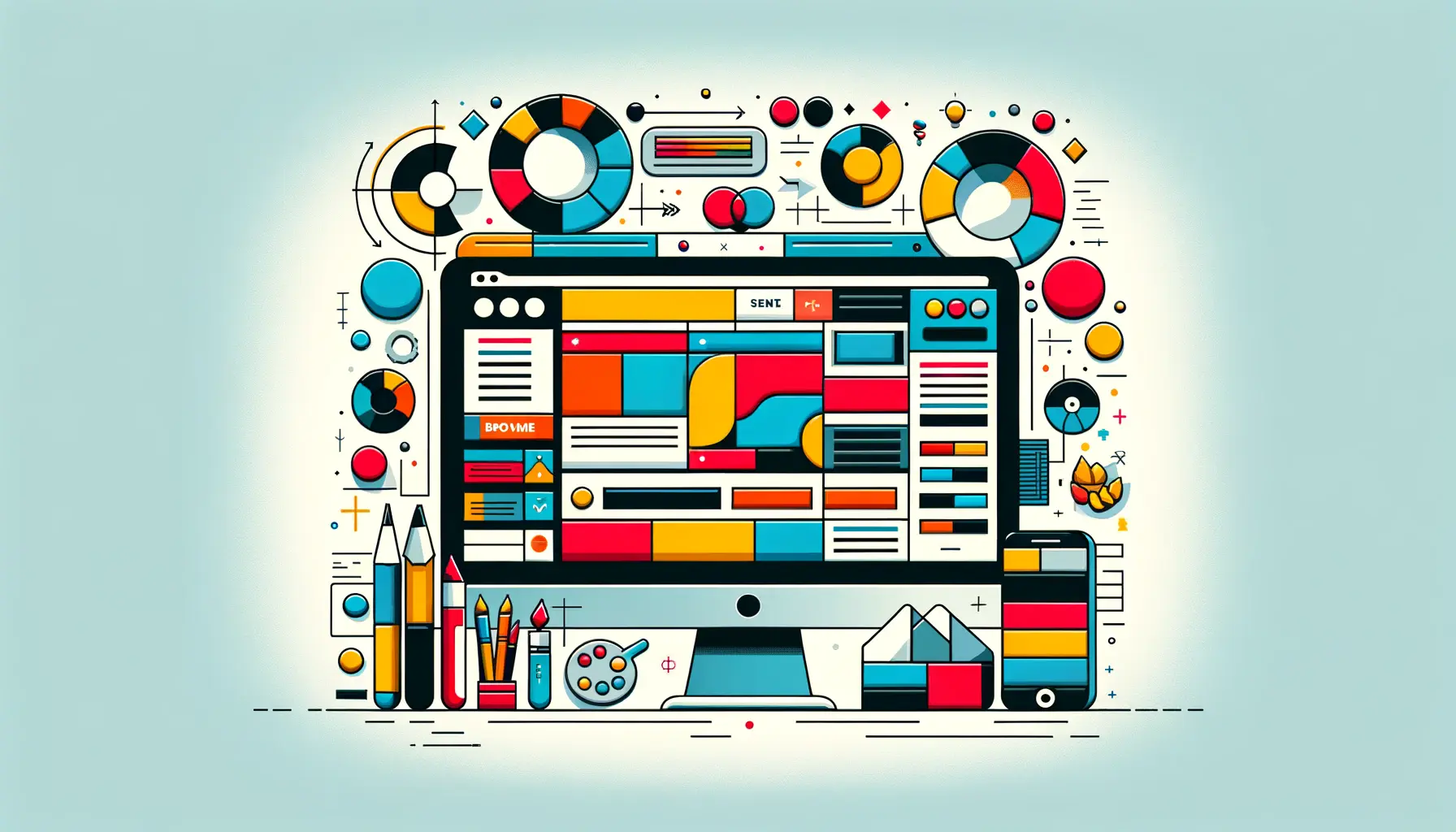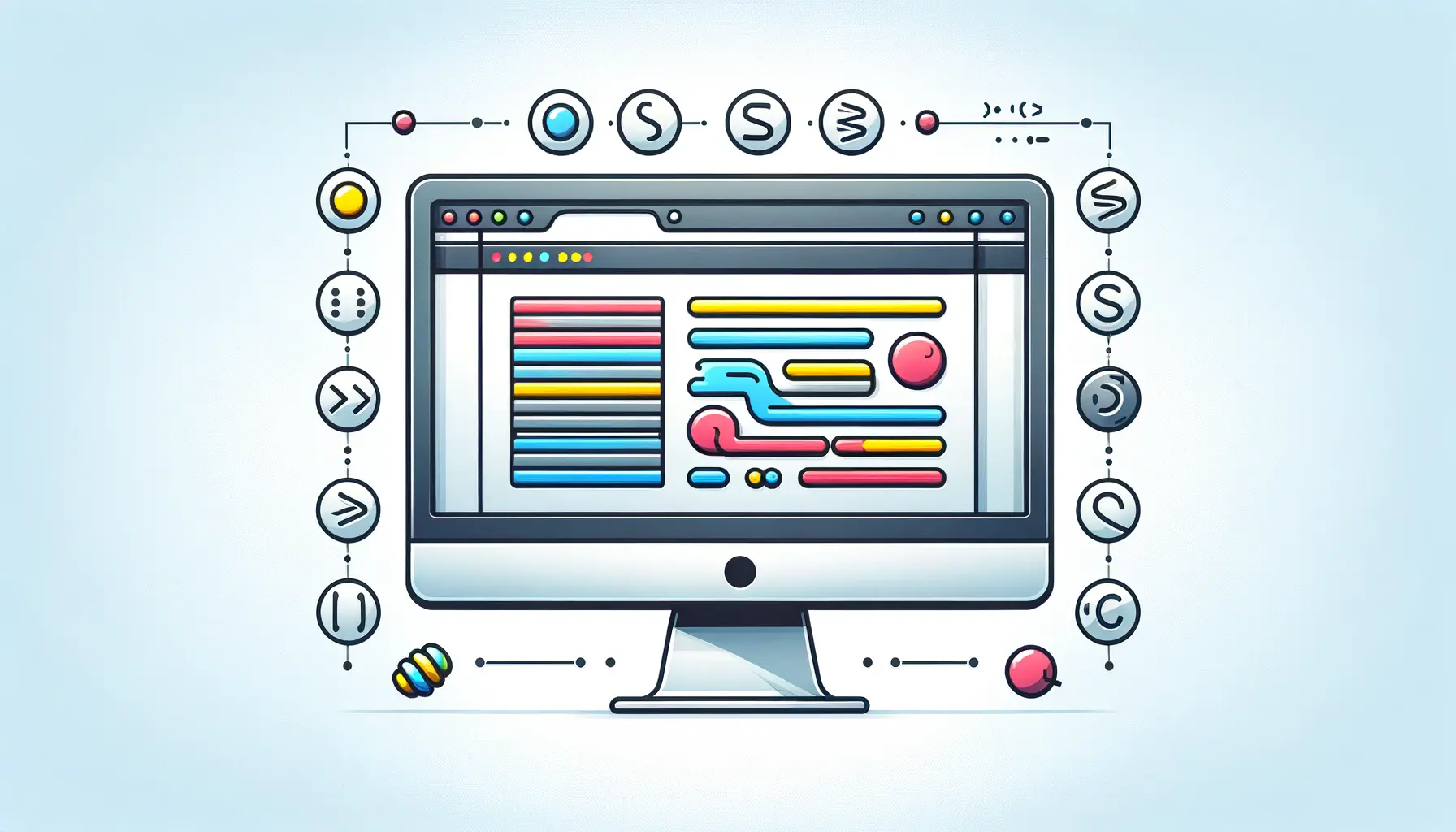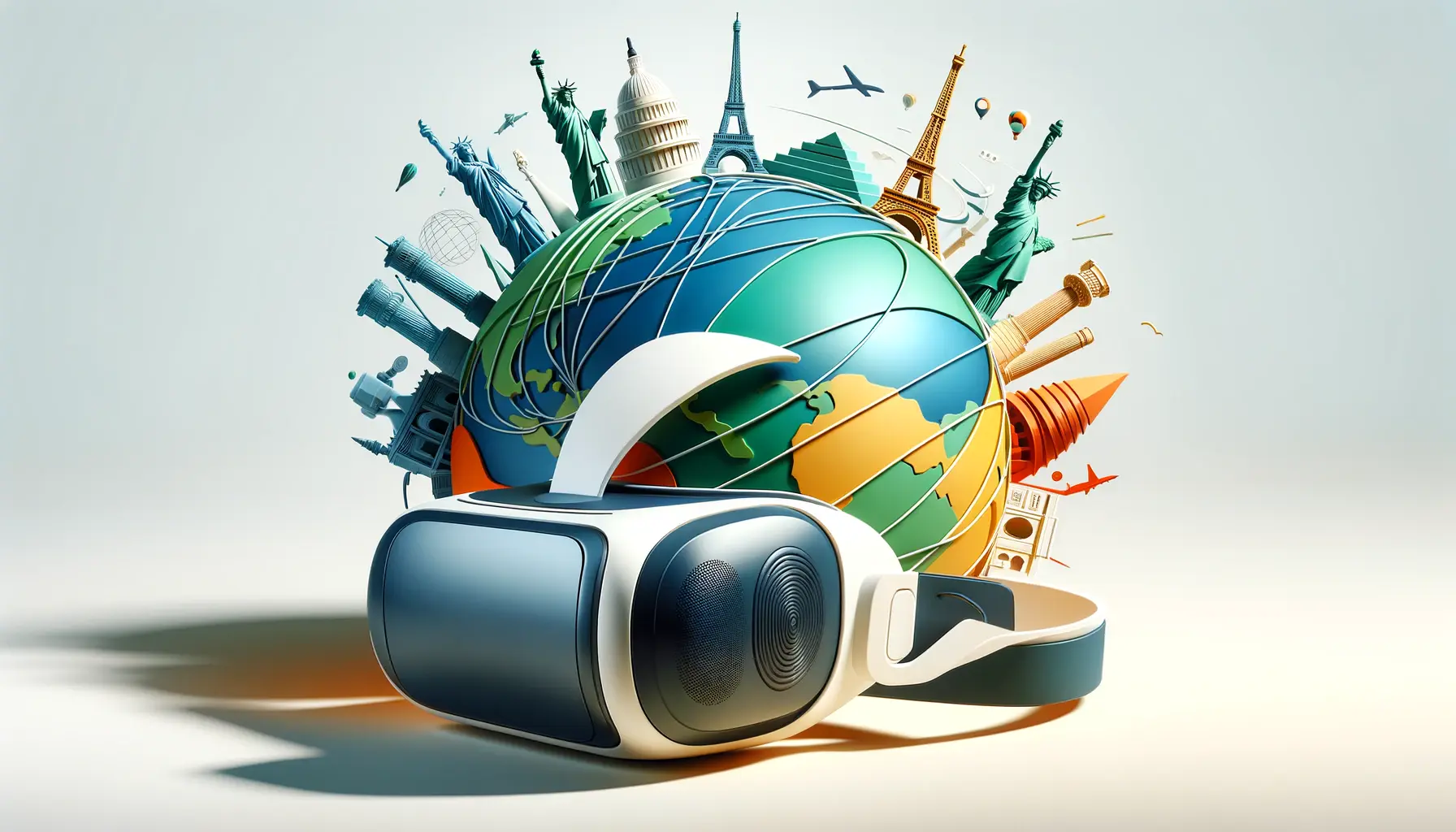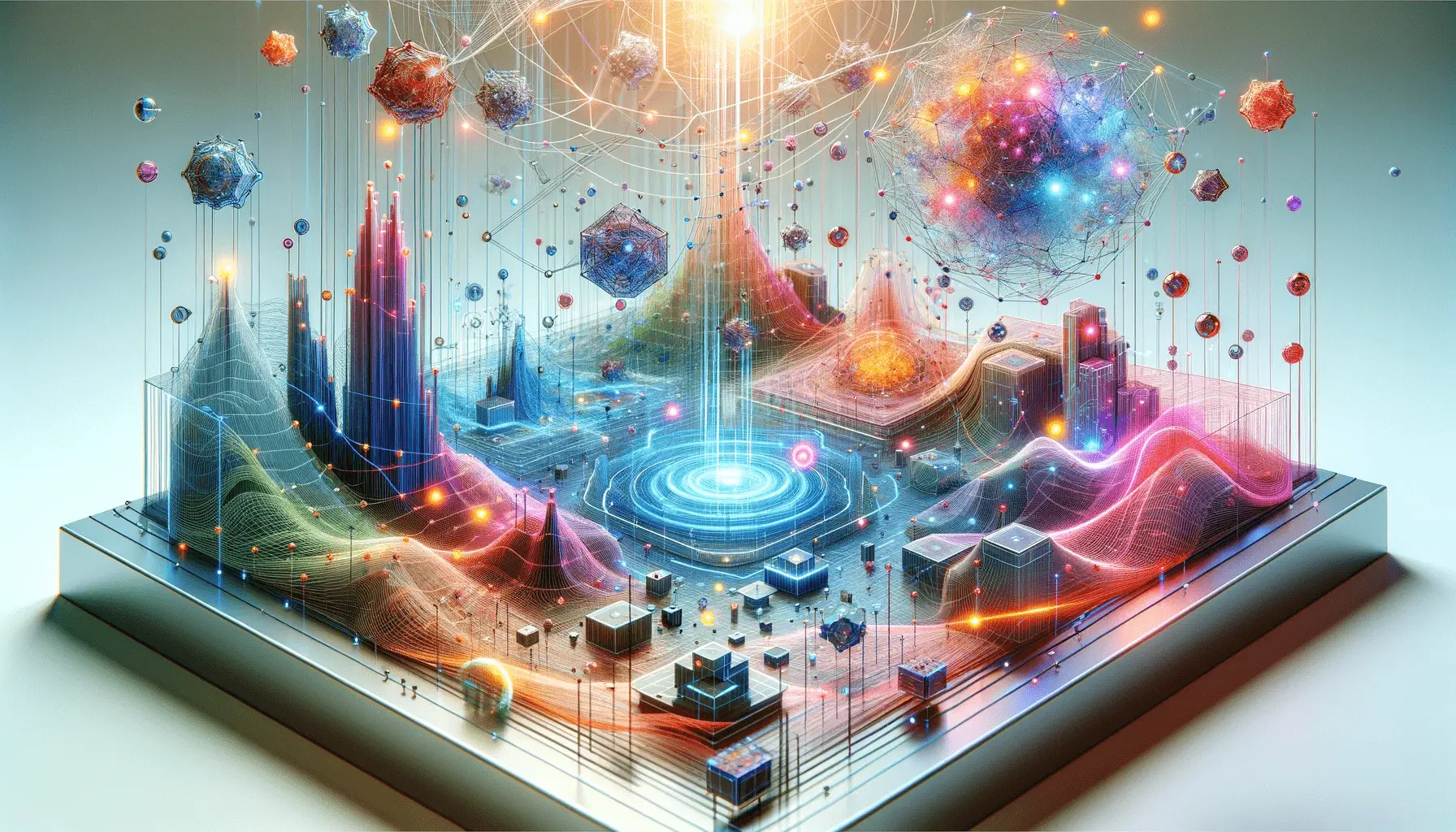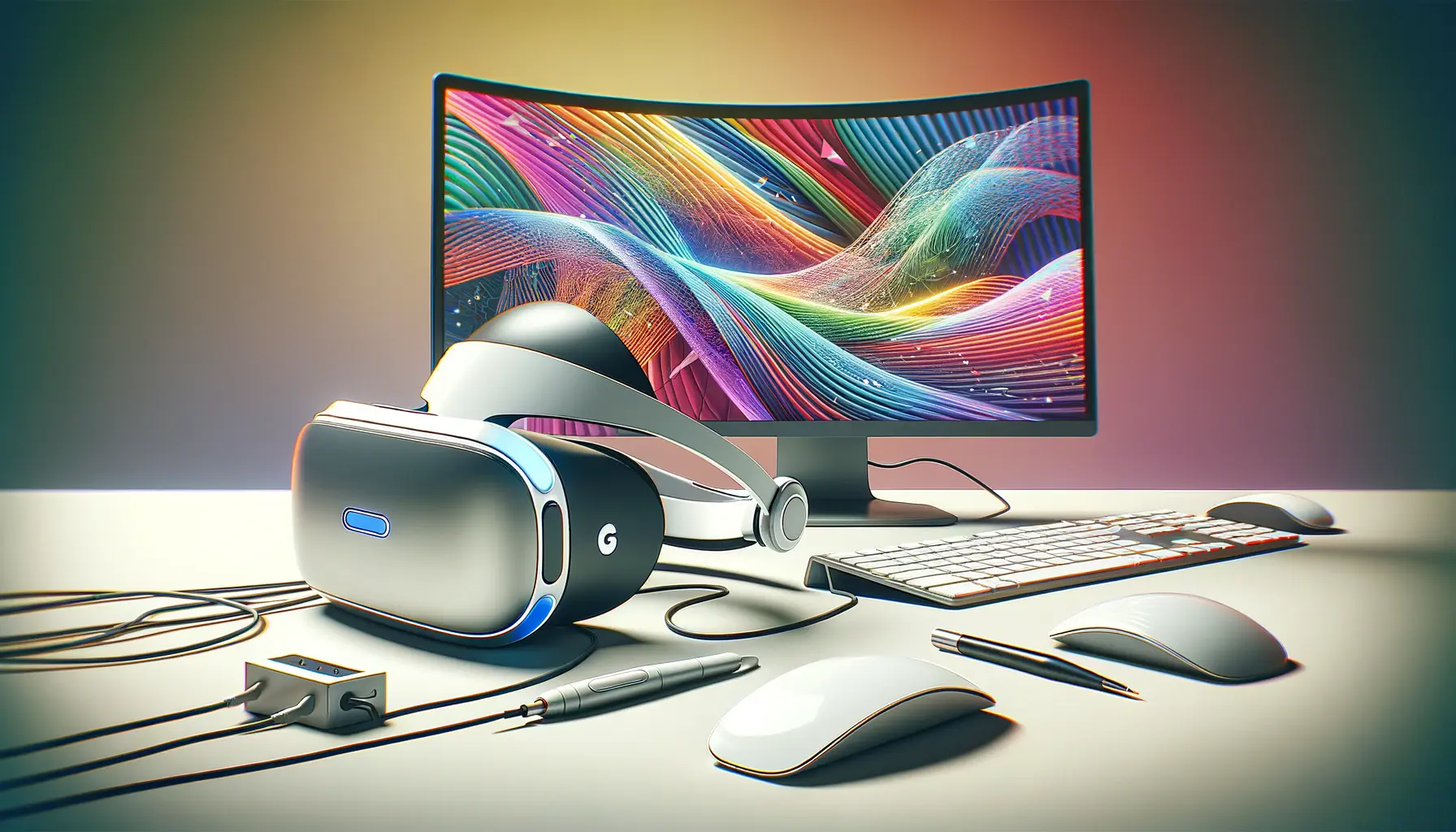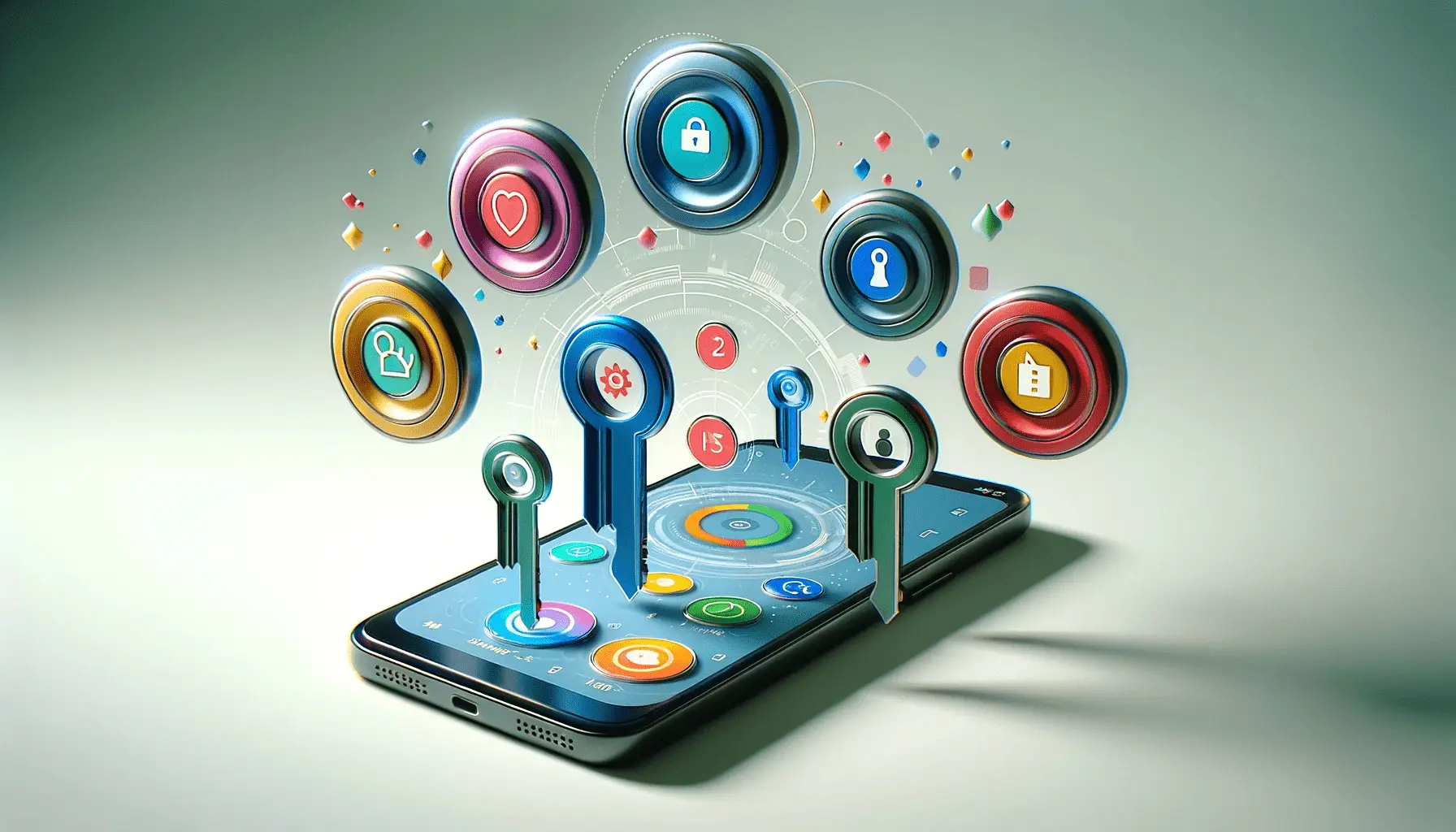AR and VR are no longer technology buzzwords—they’re changing the way we interact with the digital world.
In web development, these immersive technologies are opening up new frontiers for creative expression.
Imagine giving your users not just a website, but an experience to walk through, touch, or even be inside of.
Sounds like science fiction, maybe?
Well, the future is now, and it’s reshaping everything about creating and experiencing the web.
Whether you’re a designer, developer, or digital strategist, it is vital to understand how AR and VR impact web design.
AR and VR allow more engagement, more natural user interfaces, and a whole new way of storytelling.
Let’s examine how AR and VR are transforming web design now, and what it has to bring to you.
- How AR and VR Are Changing Web Design
- Design Principles for Integrating AR and VR
- AR and VR Web Development Frameworks and Tools
- Use Cases and Examples of AR and VR in Web Design
- Future Trends of AR and VR in Web Design
- The Future and the Impact of AR and VR on Web Design
- Frequently Asked Questions About AR and VR in Web Design
How AR and VR Are Changing Web Design
We live in an era where digital experiences are expected to be fast, engaging, and personalized.
AR and VR in web design are answering that call.
They’re not just add-ons—they’re redefining how websites function and how users interact with them.
AR and VR are pushing web design from flat screens to fully immersive experiences.
And guess what?
This is just the beginning.
The rise of immersive technologies in web design
Over the last couple of years, AR (Augmented Reality) and VR (Virtual Reality) have transitioned from gaming and entertainment into the mainstream.
More and more companies are integrating AR and VR directly into their websites to provide experiences that lead users back time and time again.
AR and VR in web design are placing brands front and center in a crowded digital space, turning passive browsing into active exploration.
- AR overlays digital objects on the real world using a camera, providing interactive ways to engage with goods and services.
- VR creates full simulations of environments and situations, allowing individuals to visit them virtually without ever leaving their homes.
These technologies are no longer science fiction—they’re about to become standard in the web designer’s toolkit.
Why AR and VR are crucial in user experience today
In web design, user experience (UX) is paramount.
AR and VR enhance UX by making it more interactive, personal, and dynamic.
By enabling users to interact with content in a three-dimensional environment, AR and VR in web design greatly enhance user retention and satisfaction.
- Customers can interact with products prior to purchase, which results in more informed purchasing decisions.
- Virtual experiences enhance the art of storytelling by making it more immersive and memorable.
- Gamification and interactivity keep people on your site longer.
Think about how much more engaging and interactive the experience is by viewing a product in your environment with AR compared to reading about it.
That’s the kind of elevated interaction AR and VR bring into web design.
Adoption trends among designers and developers
Developers and designers increasingly support AR and VR technologies.
WebXR, A-FrameA web framework for building virtual reality experiences using HTML-like syntax., and Three.jsA JavaScript library that simplifies 3D rendering and animation using WebGL. are some of the platforms that are making it easier than ever before to incorporate immersive experiences into websites.
As technology advances, the bar is lowering, and small groups are now capable of creating huge experiences.
From customized AR effects to complete VR environments, designers are finding creative means to shock and amaze guests.
The result?
Sites that don’t just tell them—AR and VR in web design boggle them.
Industries leading the pack for AR/VR sites
While nearly every industry can benefit from AR and VR, some have been quick to integrate these technologies into web design:
- E-commerce: Virtual try-ons, product visualization, and in-room previews.
- Real estate: Virtual home walkthroughs and interactive property tours.
- Education: AR-based learning systems and instruction in immersive environments.
- Healthcare: Virtual consultations and interactive anatomy models.
- Travel and tourism: Virtual destination previews and discovery.
If you are in any of these industries, AR and VR are not trends—they’re innovative solutions that you can’t afford to ignore.
So, where do you fit in this engaging wave?
En route, we’ll discuss creating with these tools, the frameworks that support AR and VR in web design, and how you can get started building immersive experiences for your site.
Immersive technologies like AR and VR are transforming websites from static interfaces into experiential platforms that invite exploration and engagement.
Design Principles for Integrating AR and VR
It’s not about throwing trendy effects on your web page.
It’s about creating real, compelling experiences that serve your users’ interests and expectations.
AR and VR in web design present huge creative possibilities, but also pose new challenges for designers.
To succeed, it’s essential to follow a strict set of underlying design principles that focus on usability, performance, and engagement.
User-centered design in immersive environments
At the center of every great digital experience is the user.
AR and VR design is a question of imagining beyond the flat screen and thinking about how human beings occupy spaces in three dimensions.
The design must be responsive, intuitive, and calibrated for natural human habit.
Eye tracking, gestures, and voice commands are taking on more significant roles in AR and VR online environments.
- Always consider the body and user movement.
- Provide good directions and onboarding for new users.
- Use comfortable familiarities like buttons, icons, and visual hierarchy in 3D spaces.
As AR and VR enter web design, the experience should feel like a natural extension of the user’s reality and not a confusing or disorienting one.
Finding balance between functionality and 3D beauty
It’s far too simple to get carried away with the visual beauty of immersive design, though.
Aesthetics should never eclipse function.
A lovely 3D interface that is difficult to use won’t provide results.
With AR and VR web design, functionality and readability are as much an issue as graphics.
- Be clear and concise.
- Minimize loading times through optimized animations and 3D assets.
- Offer uninterrupted transitions and natural flow between scenes or environments.
Storytelling through design is key.
Think through each graphical element to move the user along and support the message you wish to convey with AR and VR.
Accessibility problems in AR and VR design
Accessibility for AR and VR is not mature yet, but it’s important to integrate it into your design process early.
Not all people have the same physical capabilities or even access to immersive hardware.
Accessible AR and VR web design needs to accommodate different needs and provide alternatives where possible.
- Provide text alternatives for audio and visual information.
- Design for seated and mobility-limited users.
- Steer clear of abrupt flashing or disorienting visuals that can induce motion sickness.
Accessibility is not a product feature—it’s a responsibility that builds trust and loyalty with your users.
Consistency and navigation in immersive UX
In a 3D web, users will easily become lost without navigation cues.
Consistent UI patterns and thoughtful spatial planning are crucial.
Your users must never be confused about where they are, how they got there, and where they can go next within AR and VR in web design.
- Utilize persistent menus or icons that do not vanish when navigating.
- Offer clear exit points and backtracking.
- Use environmental cues like lighting, depth, and color to guide movement.
Consistency breeds confidence.
If users know what to expect, they will be more likely to explore and interact with your AR and VR content.
Designing for AR and VR in web design is a blend of art and strategy.
It requires empathy, attention to detail, and a deep understanding of how people perceive and interact with digital environments.
Get these principles right, and you’ll create immersive web experiences that not only captivate but also convert.
Effective AR and VR design goes beyond aesthetics—it demands user-centered thinking, accessibility, and purposeful interaction planning in three-dimensional space.
AR and VR Web Development Frameworks and Tools
Creating rich web experiences that engage users once required complex programming and top-of-the-line hardware, but no longer.
Today, there’s a wide range of tools, libraries, and frameworks that make developing AR and VR in web design easier than ever.
Whether you’re a seasoned developer or just starting out, these tools make it possible for you to craft engaging, interactive 3D experiences directly in the browser.
WebXR API: The immersive web standard
Beneath many AR and VR web experiences lies the WebXRA web API that enables the creation of immersive AR and VR experiences directly in the browser. API.
This foundational tool allows developers to create mixed reality experiences that run well on everything from desktop to mobile to headset.
It supports both augmented and virtual reality interactions and is implemented by major browsers like Chrome and Firefox.
- Supports both AR and VR devices with a single interface.
- Enables real-time motion tracking and spatial awareness.
- Ideal for cross-platform immersive web design.
With WebXR, you can create responsive, immersive experiences that function across devices without needing standalone apps.
Three.js and A-Frame for 3D web experiences
Three.js is a very popular JavaScript library for 3D rendering in the browser using WebGLA JavaScript API for rendering 2D and 3D graphics within web browsers without the need for plugins..
It’s widely used in AR and VR web development to create intricate, interactive 3D models and worlds.
A-Frame, on the other hand, is a web framework developed on top of Three.js that simplifies the creation of VR and AR experiences.
It uses HTML-like syntax, so it’s simple for newcomers to pick up and still feature-complete for veterans.
- Three.js provides full control over 3D rendering and animation.
- A-Frame allows for quick prototyping using reusable components.
- Both offer WebXR support for immersive web integration.
They simplify the process of turning complex 3D ideas into reality without slowing down the development process.
Best AR/VR design software for web creators
Designing for AR and VR in web design requires tools that can handle 3D modeling, animation, and spatial interaction.
Fortunately enough, there are some easy-to-use design platforms that cater to immersive design needs.
- Blender: Free, open-source 3D creation software for modeling, animation, etc.
- Unity: Popular game engine that supports WebXR via third-party plugins.
- Adobe Aero: Enables the creation of AR experiences without coding, ideal for designers.
These tools enable you to develop assets that can be exported and realized within web frameworks, bridging the gap between development and creative vision.
Plugins and CMS support for immersive features
The majority of modern CMSContent Management System, a software application used to create and manage digital content easily. platforms like WordPress now include plugins that support AR and VR feature functionality.
These plugins simplify the embedding of immersive content without requiring extensive technical knowledge.
- 360° image and video viewers for virtual tours.
- WebAR integrations for product demonstrations in AR.
- VR galleries for showcasing creative or property portfolios.
This allows even marketers and content creators to start adding immersive experiences to websites using familiar CMS interfaces.
Low-code tools for AR/VR website prototyping
In case you are a non-developer and wish to dabble in AR and VR in web designing, no-code and low-code platforms are your best bet.
Such platforms allow you to build immersive prototypes and publish them to the web without having to indulge in heavy coding.
- ZapWorks: Drag-and-drop AR platform with WebAR publishing.
- 8thWall: WebAR platform with robust tools and templates.
- Vectary: 3D modeler with AR export and web embeddability.
These tools lower the barrier to immersive design, allowing more creators to bring their ideas to life on the web.
The AR and VR development ecosystem is growing at a breakneck pace, as are the tools that enable it.
With the right frameworks, libraries, and platforms, any web project can be turned into an interactive, immersive experience that holds user attention and keeps them coming back for more.
Tools like WebXR, A-Frame, and Three.js are democratizing immersive web development, enabling both beginners and pros to create powerful AR and VR experiences directly in the browser.
Use Cases and Examples of AR and VR in Web Design
The true potential of AR and VR in web design is best realized through real-world applications.
These technologies are not in the test phase anymore—they’re already transforming the way brands engage with their audience.
From commerce to education, businesses in all industries are finding creative ways to leverage immersive technologies to maximize user engagement, drive conversions, and tell better stories.
Virtual product demonstrations in e-commerce
The most exciting use of AR and VR is in e-commerce.
Customers are now able to try clothes virtually, fit virtual furniture in the house, or visualize a 3D product model before a purchase—all from a website.
It reduces uncertainty, builds confidence, and greatly improves customer experience.
- AR try-ons: Virtual make-up, glasses, or clothes fitting through a webcam or smartphone.
- 3D product viewers: Zoomable, rotatable models that enable users to navigate features.
- WebAR previews: View products in your environment without the need to download an app.
These technologies are already being used by brands like IKEA, Warby Parker, and Nike to boost engagement and sales.
Interactive 3D tours for real estate and travel
Real estate and tourism industries are embracing AR and VR in web development to give users interactive previews that allow them to feel spaces out without being there.
Virtual tours allow prospective customers or visitors to get a sense of what it’s like to be in a place, which enhances emotional connection and buying decisions.
- 360° virtual home tours for real estate properties.
- VR hotel and resort walkthroughs embedded on booking websites.
- Interactive travel guides with AR-supported points of interest.
These solutions are not just time-saving but also offer a better user experience that static images simply cannot deliver.
Augmented learning experiences in the education sector
Education is also being revolutionized digitally, and immersive technology plays a leading role.
AR and VR in school web design make it possible for students to understand abstract ideas, engage with lessons, and learn more efficiently.
- AR-supported textbooks and learning platforms.
- VR simulations of science, history, and medical school.
- Gamified learning modules that inspire discovery.
Organizations and online education sites are adding these tools to provide more engaging and effective online learning.
Immersive storytelling in media and entertainment
Media companies and content creators are using AR and VR in web design to push the boundaries of digital storytelling.
These tools allow audiences to step inside the narrative, choose paths, and interact with story elements like never before.
- VR music videos and live performances in 3D environments.
- AR filters and scenes in digital journalism and documentaries.
- Immersive experiences for film promotion and fan engagement.
This level of interactivity provides emotional engagement and increases user interaction with the content.
3D user-interacting portfolio websites
Creative professionals like designers, photographers, and programmers are turning to AR and VR to stand out with interactive portfolio sites.
Instead of looking at images, users are allowed to explore virtual galleries, simulate animations in 3D, or even interact with projects in real-time.
- VR art museums and interactive design portfolios.
- AR summaries for demonstrating product functionality or prototypes.
- Web resumes with gamification, 3D navigation, and interaction capabilities.
These experiences not only impress visitors but also highlight the creator’s talent in developing something new and unique.
From shopping to learning to personal branding, AR and VR in web development are unlocking new levels of user interaction and innovation.
With further platforms and tools on the way, these examples will become even more sophisticated and user-friendly for creators of all proficiency.
Real-world use cases in industries like e-commerce, education, and real estate prove that AR and VR in web design are practical, scalable, and highly engaging for users.
Future Trends of AR and VR in Web Design
The evolution of AR and VR in web design is far from slowing down.
In fact, it’s just getting started.
As technology rapidly advances, new opportunities are emerging that will reshape how users interact with websites.
The future is immersive, and if you’re involved in digital design or development, keeping up with these trends isn’t optional—it’s essential.
AI and AR/VR convergence in web design
Artificial Intelligence is being more and more used to improve AR and VR web experiences.
From real-time personalization to adaptive interfaces, AI makes personalized immersive content based on user behavior.
If AI is integrated with AR and VR, you have smart environments that are responding to users in real-time.
- AI-driven AR filters and effects altering with facial expression or voice.
- VR environments that change storytelling or interaction patterns dynamically according to user interest.
- Suggesting content in machine learning-based immersive sites.
This convergence promises to radically develop both UX and UI design within immersive environments.
Wearables and how they influence web experience
With smart glasses, AR headsets, and VR goggles going mainstream, AR and VR in web design will soon be ubiquitous on-the-go.
Apple (Vision Pro) and Meta (Quest) are leading this charge towards complete spatial interaction that is hardware-included web browsing.
- Voice-free content interaction and browsing within AR environments.
- Location-based content delivered by wearables.
- New design principles for wearable-optimized websites.
This trend forces designers to step past the screen and create content that feels at home in physical and digital overlays.
5G and accelerated rendering for immersive content
One of the largest impediments to immersive web adoption has been performance—but that’s evolving.
With 5G and edge computingA computing model that processes data closer to where it is generated to reduce latency and bandwidth usage., AR and VR content can now be rendered quickly and reliably like never before.
This means richer visuals, less latency, and more fluid interactions.
- Quicker 3D model and VR environment loading.
- Real-time collaboration in virtual web spaces.
- Streaming high-definition AR content inside the browser.
As 5G coverage grows, users will increasingly expect smooth immersive experiences on mobile as the norm, not the exception.
The role of the metaverse in next-generation websites
As concepts like the metaverse gain traction, websites will begin to function more like destinations rather than pages.
AR and VR web development will most likely lead the charge in creating these immersive, constant states of being.
- Virtual worlds branded and served up through the web.
- Cross-platform avatars and shareable digital identities.
- Hybrid shopping experiences blending AR shopping with VR events.
Designers will need to think spatially, socially, and sustainably as physical and digital boundaries become blurred.
What designers will be doing in 2025 and beyond
The future of web design and AR and VR will demand new skill sets and ways of thinking.
From 3D asset development to motion design to spatial narrative, the web designer’s skill set is expanding rapidly.
- Mastery of WebXR and real-time 3D engines like Unity and Unreal Engine.
- Designing accessible, inclusive virtual reality experiences.
- Embracing sustainability through lightweight, efficient design practice.
Lifelong learning for designers and developers is necessary, as well as ongoing experimentation with new tools and interfaces in order to stay competitive.
AR and VR are not just shaping the future—they constitute it.
While the web is evolving further as an immersive platform, those who stay smart and agile will take the lead in creating the future generation of digital experiences.
As AI, wearables, and 5G evolve, immersive web experiences will become the norm. Designers must adapt to spatial design thinking now to stay ahead.
The Future and the Impact of AR and VR on Web Design
A Retrospective of the Role of Immersive Technologies
AR and VR in web design have gone beyond fantasy to reality-based tools redesigning the online world.
Both are transforming user interactions with websites from static interfaces to dynamic, interactive, and emotionally stimulating ones.
Whether a person is purchasing products from an online retailer, visiting a virtual home, or learning in an online classroom, AR and VR are redefining user experiences.
As we learned throughout the article, companies of every type are adopting immersive web experiences to make users more engaged, secure more conversions, and stand out in saturated markets.
Virtual try-ons, interactive spaces, and full-dive storytelling are no longer new—they’re becoming an emerging norm for user experience.
Key Takeaways for Designers and Developers
To realize the full potential of AR and VR in web development, developers must be both creative and strategic.
Designing immersive websites requires not only technical skills but also an understanding of user behavior, accessibility, and content navigation in virtual environments.
- Prioritize user-centered design to make immersive environments user-friendly and accessible.
- Use technologies like WebXR, A-Frame, and Three.js to simplify development and enhance performance.
- Talk about real-world applications such as e-commerce try-ons, 3D tours, and AR learning platforms.
- Stay up-to-date on emerging trends such as AI integration, wearable tech, and the creation of the metaverse.
- Commit to ongoing education to keep current with shifting frameworks and immersive design standards.
Looking Ahead to an Immersive Web
With the launch of 5G, AI, and spatial computing as mainstream technologies, the web is shifting towards becoming an immersive experience space wherein AR and VR in web design will play a dominant role.
Designers and developers shaping the future will not just build websites—they will create virtual environments users can walk through, interact with, and remember.
The future of the internet is not just about being seen—it’s about being experienced.
As AR and VR continue to blur lines between the digital and the physical worlds, embracing these technologies will be essential for staying relevant and impactful in the years to come.
Designers who embrace immersive technologies early will lead the charge in creating web environments that are not just interactive—but unforgettable.
Quality web design is key for a great website! Check out our service page to partner with an expert web design agency.
Frequently Asked Questions About AR and VR in Web Design
The following are some of the most asked questions about integrating AR and VR in web design.
These answers will assist in dispelling common myths and guide you on how to maximize the potential of immersive technologies.
AR overlays digital information onto the real world via the web, whereas VR creates complete virtual worlds that are entered using compatible hardware and browsers.
No, most VR content can be viewed within web browsers without a headset, though the use of one can greatly enhance immersion and interactivity for more advanced experiences.
Yes, and third-party tools simplify the integration of AR and VR in web design into WordPress, enabling rich product experiences, virtual tours, and more with minimal or no coding.
It continues to get better, but designers still need to consider mobility, perception differences, and various interaction methods to create inclusive AR and VR web experiences for all users.
Prices vary with complexity, platform, and tools.
Simple AR and VR integrations are affordable, while advanced 3D environments or custom immersive experiences can be more expensive to build.
E-commerce, real estate, education, healthcare, and tourism are most impacted.
AR and VR in web design increase product engagement, learning, exploration, and digital storytelling in these sectors.
Yes, many AR and VR web experiences are optimized for mobile.
WebXR and other APIs allow responsive designs that run smoothly across smartphones and tablets without extra apps.
Developers should know HTML, JavaScript, WebGL, and work with frameworks like A-Frame or Three.js.
Skills in 3D modeling and immersive UX design are also very beneficial.
Yes, SEO for AR and VR content must include optimized text alternatives and metadata since most immersive content is visual and not easily crawled by search engines.

